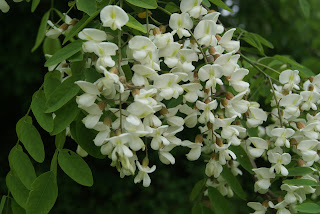The truth is that the Nkisis, Fundamentos, Bilongos, Cemis all adapt much more easily than we do. We spend time thinking about when the warm weather is going to return and how much time we have before the cold weather is going to arrive again. As we travel through these photos of our Munanso in the snow storm that visited us over the past couple days, we are going to reflect on some of the differences or different perspectives that we are challenged with in the Diaspora.
In the Caribbean life Decays into Death very quickly, just like it does here in the summer. If an animal dies here in the summer, within a couple days it is almost totally putrified (just as in the Caribbean), a fruit that falls from the tree immediately rots and many insects and creepy crawlers come to have a feast. In the winter all this putrefaction occurs under the earth. We take advantage of this to enhance our Conuco's fertility by working with the purtrefaction within the soil. Above the soil all the deciduous trees drop their leaves and under the snow these leaves quickly decay. The trees and shrubs energies all sink to the roots and we can also take advantage of this to harvest more powerful roots at this time of year. As Paleros who thrive on the roots and palos that we can harvest, the cycle of winter, then becomes very important to us and our Ancestral Trees. The winter here opens up a window inside of our Traditional Practices that take us into another dimension of those practices.
From our perspective rigidly taking Traditional practices that evolved within the Caribbean and blindly superimposing them upon our environment in the Diaspora is failing to appreciate and find the wisdom within those very Traditional Practices. Our Traditional Practices embodied adaptability and resilience and the ability to form Tratado with the Misterios and Phenomenon that our Ancestors bravely encountered.
Palo itself holds Tratado with many, many Taino plants and animals (and bones...). If the Africans who came to the Caribbean had been unable to do this, then we would not have Palo today, there would only be christianity and the conquerors would have destroyed the Essence of our Souls. The photo below is a powerful vision of a Taino Cemis (Guata-uba Maquetaurie) with his head covered with snow. This vision of this Cemis would never be seen in the Caribbean, but here the natural Mpungos of this area, including the Mpungos or Cemis of the Weather Patterns are giving us a glimpse of an aspect of Guata-uba that we would not be able to see in the Caribbean.
Although our statements here may be considered controversial by some, from our perspective being in the Diaspora adds further depth and expansion to our Traditional Caribbean Practices. This is not a dilution or weakening of the Traditions, or an "Inventos". What is a fantastical mistake is to think you can take a Tradition that arose in the Tropics and apply it blindly to a Temperate Region with no respect for or sensitivity to the Natural Mpungos of that region. That is a disrespect not only of the Mpungos but also of the many Indigenous Ancestors of this area.
We understand the importance of forming a Tratado with the Land upon which we come to be in the Diaspora because we want no conflict with the rightful (Ancestral) caretakers of this land. It was the european who bullied their way into everyone else's land and then imposed their rigid doctrines, customs, and religions upon us. We are traditional people with sensitivity and spiritual maturity who would never bring that type of arrogance to the lands we walk on. It is vital to wholeheartedly engage a process of embracing of the Spirits of the land where we live. We are aware that we are "the Dead" coming to speak to "the Living" of the Land upon which we are walking. The Living are those Mpungos who continue to be here long before our Birth and long after our Death. We know that we can never erase the Ancestors whose bones are here, they are the Elders of this world!
We understand that the Palero who remains rigid, will never escape from the illusion of "purity" that does not exist inside of a Tradition that arose from the conditions out of which Palo arose. This notion of "purity" is misplaced and becomes the torments of the mind that never lead to any conclusions.
The "purity" is in the Mpungo! "Purity" must be redefined, not from a colonized perspective, but from a Traditional Understanding.
"Purity" is in the dynamic conversation between the Living and the Bakulu which enables the Living to make those adaptations that will ensure thriving and abundance.
"Purity" as "Pure Palo" is about taking all the garbage out of your ears, eyes, and mind, and putting the attention and focus on healthy progression and not on petty battles. On focusing on the wisdom of the Bakulu and the wisdom that the Natural World, the Mpungos of Life, are constantly and vividly showing us!
The Bakulu is focused and extremely concerned with the Earth Changes that we are undergoing and the critical condition that ALL LIFE upon Earth is facing. The Bakulu is not obsessed with petty differences and who is playing Palo "more pure"!
The Snow brings a magical energy to the Ceremonial Land and Munanso, and reveals tracks, of birds, animals and two-leggeds. It forces us to stop in our tracks and pause to take in the messages it brings. We always make time to take a long walk around in the snow as it is a blessing that we truly appreciate right within our Caribbean Traditions!


















































